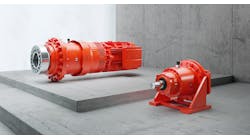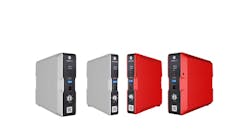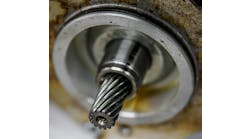Jim Montague is the executive editor for Control. Email him at [email protected].
What do I know about servos? Not much off the top of my head. I know I'm covering them in more stories, but I thought it was because people just like saying the word "servo" over and over. This is much like Jerry Seinfeld's old observation that people repeatedly say "salsa" because they love how it sounds.
Other than that, I thought servos were drives and motors that produced extra feedback—usually aided by an encoder—and that this information was more detailed and useful than data gained from regular motors and drives. Well, better data means more accurate control, which is always attractive to builders and users. Once again, an apparently simple technical advance extends beyond itself to impact unexpected discrete manufacturing applications.
How about some for instances? No problem. I'm better at relaying what other people know.
Read Also: Motion Control Top Tips–Part II
Anyway, because one-third of the energy used by rubber injection molding machines goes to the hydraulic drive, Maplan in Ternitz, Austria, switched a couple of years ago to a servo-hydraulic solution based on B&R Automation drives networked via Ethernet Powerlink, and reduced its drives' energy consumption by 70%, halved noise levels and accelerated Maplan's dry cycle up to 15%. These machines have injection volumes from 10 to 26,000 cm3, clamping forces of 150- 10,000 kN and cycle times from 30 seconds to several minutes. But their previous drive included a pressure-regulated, variable-flow pump driven by an induction motor, which had to run continuously, wasted energy and required cooling.
Consequently, adopting its new constant-volume pumps with B&R servo drives and motors gave Maplan internal-gear pumps that are 60% smaller than its former axial-piston pumps, but still achieve the same flow volumes thanks to rapid-motion speeds up to 4,000 rpm, compared to just 1,500 rpm by the previous induction motors and variable-flow pumps. In this case, using servos enabled Maplan to adapt its pump activity and motor speed to how much power was actually required to perform its rubber injection molding and save that 70% on its drive-side power, change oil less often, reduce water consumption and cut its overall energy costs in half.
Similarly, printing press builder Mark Andy in St. Louis recently needed to upgrade and standardize the motion controls on its servo-driven, in-line, flexographic presses, but it didn't want to give up some of its existing software platform and backward compatibility with the revamp. After evaluating options from more than 15 suppliers, Mark Andy's engineers settled on a Mitsubishi Electric automation platform with safety servos, HMI and software, and developed and tested them for six weeks.
"The software and servos improved our tension control by 500% with more accurate registration and less servo following error than other systems we tested," says Kevin Wilken, Mark Andy's engineering vice president. Mitsubishi's servos also preserved Mark Andy's backward compatibility.
Likewise, Pfankuch Machinery in Ahrensburg, Germany, reports that earlier this year it needed to improve the performance and speed of the motion-control element in its mid-range SmartFeeder friction feeders for inserting leaflets and products into sales packaging. Previously, the machine used a brushed dc motor and homemade drive to perform real-time registration and insert up to about 100 items per minute with 2-mm position resolution. However, besides seeking to switch to a brushless ac servomotor and embedded servo drive to improve speed and precision and reduce maintenance, Pfankuch also wanted to complete its electronics upgrade with no more than a small increase in manufacturing costs in order to keep SmartFeeder competitive.
Consequently, the builder sought help from Metronix, which agreed to strip down its servo drive, remove its casing and costly system-level connections and allow Pfankuch to add application-specific connections, mounting and firmware. Local control intelligence embedded in the drive performs control calculations more rapidly and employs a more sophisticated positioning algorithm that adjusts drive speed more often to enhance registration resolution. As a result, its new brushless ac servodrive increased the feeder's insertion speed to 150 items per minute with 1-mm position resolution and even gave it a CANopen port for future networking.
In short, there don't seem to be many applications that servos can't help—and it's fun to say.





